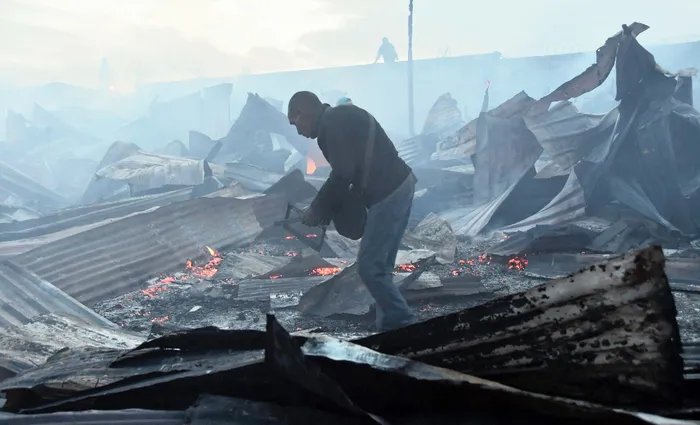These are the areas most vulnerable to summer fires in Cape Town

According to an article by seven local scientists and researchers, there are a few specific areas of Cape Town that can be pinpointed as extremely at risk of runaway wildfires, which would be disastrous for their surrounds. According to an article by seven local scientists and researchers, there are a few specific areas of Cape Town that can be pinpointed as extremely at risk of runaway wildfires, which would be disastrous for their surrounds.
Cape Town - The slopes above Kirstenbosch in Newlands and the leeward side of Table Mountain are the areas of Cape Town most vulnerable to a devastating fire this summer.
According to an article by seven local scientists and researchers, there are a few specific areas of Cape Town that can be pinpointed as extremely at risk of runaway wildfires, which would be disastrous for their surrounds.
The pristine slopes of the Back Table are especially at high risk because a fire hasn’t occurred there in four decades. “The areas that burned in a large fire in 2015 have lower fuel loads and thus pose little fire hazard,” says the article.
“Areas that didn’t burn in the 2015 fire are a greater fire hazard.
“Given the magnitude of the fuel loads, ignition in these areas would likely result in a disastrous fire.”
The article’s authors include Mark New, director of UCT’s African Climate and Development Initiative, Tony Rebelo, a scientist at the SA National Biodiversity Institute, and David Carlyle Le Maitre, principal ecosystem researcher at the CSIR.
“The highest fire hazard of all would be the slopes above Kirstenbosch, Newlands, and the Back Table (back of Table Mountain), where fire has been kept out for over 40 years.
“Areas such as Cecilia and Tokai, on the urban edge of the southern suburbs with alien pine and gum plantations, are also a big hazard.”
The climate scientists and fynbos ecologists explained in the article, published in The Conversation, that fynbos health was dependent on a fire every 12-15 years, without which species would be lost. Fires prevented the build-up of dense, dry vegetation, which created a huge fire risk.
“If we have managed fynbos well, an ignition point will not become a disaster. Under what conditions might ignition prove dangerous? When there are high fuel loads with suitable fire weather, this can result in disastrously uncontrollable fires.
“When do we get high fuel loads? In two scenarios: when fire has been suppressed in fynbos for too long, and when alien trees such as pines, wattle, hakea and gums have invaded fynbos.”
They recommended three measures to lower the risk of fire: alien vegetation should be cleared to reduce the fuel load; authorities should manage fynbos appropriately by making sure controlled burns occur every 12-15 years; and the public should be better educated to prevent future disasters.